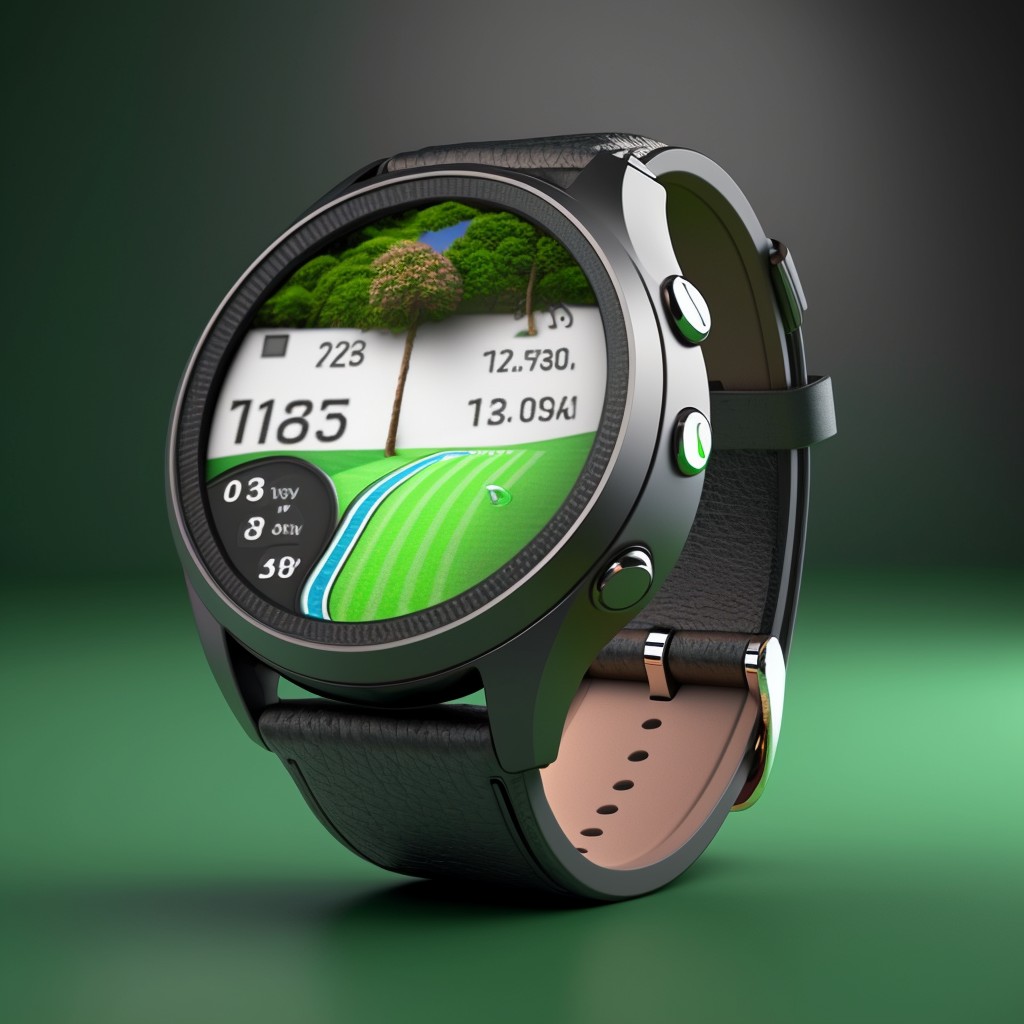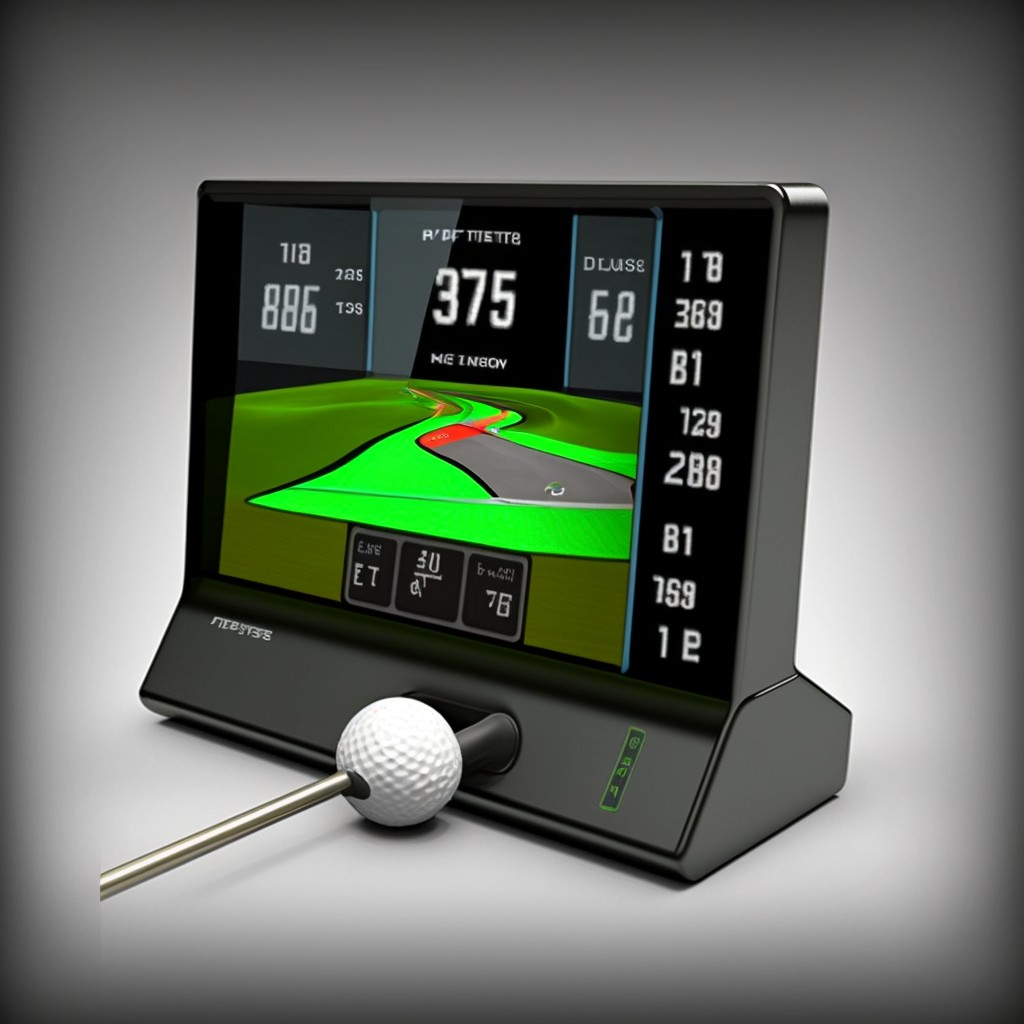
Hello Friends! (hat tip the the legendary Jim Nantz) We all know that golf is an incredible game, one that can bring endless hours of joy and frustration in equal measure. While practice is key to mastering the sport, it’s not just about how much time you spend on the course, but also about the quality of that practice. That’s where we come in! In this article, we’ll introduce you to one essential piece of equipment that can help take your golf game to the next level. So now let’s say hello to the golf swing analyzer, your new best friend on the green. This nifty tool can provide valuable insights into your swing, helping you fine-tune your technique and ultimately shave strokes off your score. So, let’s dive in and learn more about this game-changing gadget, shall we?

The One Essential Tool: The Golf Swing Analyzer
So, what’s the deal with the golf swing analyzer, and why is it such a game-changer for golfers like us? Well, this fantastic tool is designed to provide detailed feedback on various aspects of your golf swing. By using state-of-the-art technology, it measures and analyzes key metrics, helping you understand what’s working well and what areas need improvement.
Now, you might be thinking, “How can this little gadget truly make a difference in my golf game?” The answer lies in the data it provides. By capturing critical information about your swing, a golf swing analyzer allows you to make data-driven adjustments to your technique. This means you can target specific areas for improvement, making your practice sessions much more efficient and effective.
But that’s not all! With a golf swing analyzer, you’ll also be able to track your progress over time, so you can see how your swing evolves as you work on your game. It’s like having your very own personal golf coach, available 24/7, giving you real-time feedback to help you reach your full potential on the course.
In the following sections, we’ll explore the different types of golf swing analyzers available, the key metrics you should be tracking, and how to choose the right swing analyzer for you. So, grab your clubs and let’s get started on revolutionizing your golf game!

Types of Golf Swing Analyzers
As you embark on your journey to golf greatness, it’s essential to find the right swing analyzer that suits your needs and preferences. Thankfully, there are several types of golf swing analyzers to choose from, each with its own unique features and benefits. Let’s take a closer look at the three main types, so you can decide which one is the perfect fit for you.
- Wearable Devices
- These nifty gadgets come in the form of smartwatches or wristbands, designed to be worn while you play. They use built-in sensors to track your swing and provide real-time feedback right on your wrist. Some popular wearable devices even integrate with your smartphone, allowing you to access more detailed data and analysis.
- Advantages: Wearable devices are incredibly convenient and easy to use, providing immediate feedback as you swing. Plus, they often come with additional features like GPS, fitness tracking, and more, making them a versatile addition to your golf gear.
- Disadvantages: The accuracy of these devices can sometimes be a concern, as they may not capture every aspect of your swing with the same precision as other types of analyzers. Additionally, they can be a bit pricey, especially if you opt for a high-end smartwatch.
- Smartphone Apps
- With the power of modern smartphones, it’s no surprise that there are some fantastic golf swing analysis apps available. These apps use your phone’s camera to capture your swing, then analyze the footage to provide valuable insights into your technique.
- Advantages: Smartphone apps are generally more affordable than other swing analyzers, as they simply require a compatible phone and sometimes an additional accessory. They also offer a great deal of flexibility, allowing you to analyze your swing from various angles.
- Disadvantages: The accuracy of smartphone apps can vary, depending on the quality of the app and the performance of your phone’s camera. Additionally, setting up your phone to record your swing can sometimes be a bit cumbersome.
- Portable Launch Monitors
- These compact devices are designed to sit near your golf ball and use advanced technology to capture detailed data about your swing and ball flight. Some models even offer simulated play, allowing you to practice on virtual golf courses.
- Advantages: Portable launch monitors are known for their accuracy, providing you with reliable data to help improve your swing. They also typically offer a wide range of metrics, giving you a comprehensive view of your golf game.
- Disadvantages: While these devices can provide exceptional insights, they often come with a higher price tag than other swing analyzers. Additionally, they may require a bit more setup and calibration compared to wearable devices or smartphone apps.
Now that you know the different types of golf swing analyzers, let’s move on to discuss the key metrics you should be tracking to make the most of your practice sessions. Keep reading, fellow golfer – we’re just getting started!

Key Metrics to Track
When it comes to improving your golf swing, knowledge is power! By understanding the critical aspects of your swing, you can make targeted adjustments to refine your technique and lower your scores. With a golf swing analyzer, you’ll have access to a wealth of data, so it’s essential to know which metrics matter most. Here are six key metrics you should be keeping an eye on:
- Clubhead speed: This measures how fast your club is moving at the point of impact with the ball. Faster clubhead speed generally leads to longer shots, but it’s crucial to balance speed with control to maintain accuracy.
- Swing path: Your swing path is the direction your club travels during your swing. A consistent and efficient swing path is vital for making solid contact with the ball and achieving optimal ball flight.
- Face angle: This refers to the angle of your clubface at the moment of impact. A square clubface (aligned with your target) is ideal, while an open or closed face can lead to slices or hooks, respectively.
- Impact position: The point on the clubface where the ball makes contact is crucial to maximizing distance and accuracy. Striking the ball in the sweet spot (the center of the clubface) is the goal for every golfer.
- Launch angle: This is the angle at which the ball leaves the clubface after impact. The optimal launch angle varies depending on factors like club selection and swing speed, but finding the right angle can help you achieve maximum distance and control.
- Spin rate: Spin rate affects how the ball behaves in the air, influencing factors like distance, trajectory, and control. Too much or too little spin can negatively impact your shots, so it’s essential to find the right balance.
With these key metrics in hand, you’ll be well-equipped to make data-driven decisions about your swing, helping you become a more consistent and confident golfer. Next, we’ll explore how to choose the perfect swing analyzer for your needs and how to integrate it into your practice routine for maximum impact. Stay tuned, and keep swinging!

How to Choose the Right Swing Analyzer
With so many golf swing analyzers on the market, it can be a bit overwhelming trying to find the perfect one for you. But don’t worry, fellow golfer! We’ve got you covered. To help you make an informed decision, here are some factors to consider when choosing the right swing analyzer:
- Budget considerations: Before diving into the world of swing analyzers, it’s essential to set a budget. Swing analyzers come in a wide range of prices, from affordable smartphone apps to high-end portable launch monitors. By determining how much you’re willing to spend, you can narrow down your options and find a device that fits both your needs and your wallet.
- Compatibility with devices: Some swing analyzers are designed to work with specific devices, such as smartphones or smartwatches. Make sure to choose a swing analyzer that’s compatible with your current devices or consider investing in new ones if necessary.
- Ease of use: A golf swing analyzer should be user-friendly, allowing you to focus on your game rather than fumbling with complicated gadgets. Consider factors like setup time, user interface, and accessibility when evaluating your options.
- Additional features and services: Many swing analyzers offer more than just swing analysis, such as GPS tracking, virtual coaching, and even online communities where you can share your progress and learn from other golfers. While these features can be a fantastic bonus, make sure to prioritize the core swing analysis functions to get the most bang for your buck.
- Customer reviews and recommendations: Sometimes, the best way to gauge the effectiveness of a swing analyzer is to hear what other golfers have to say. Check out customer reviews and ask for recommendations from friends or golf professionals to get an idea of which devices deliver on their promises.
By taking these factors into account, you’ll be well on your way to finding the perfect golf swing analyzer to help you elevate your game. Next up, let’s discuss how to integrate your new swing analyzer into your practice routine to make the most of this powerful tool. Keep reading, and let’s keep improving together!

Integrating the Swing Analyzer into Your Practice Routine
Congratulations, fellow golfer! You’ve taken the first step towards golfing greatness by choosing the perfect swing analyzer. Now, it’s time to make the most of this amazing tool by integrating it into your practice routine. Here’s how you can do just that:
- Setting goals and benchmarks: Before hitting the range, take some time to set clear, achievable goals for your golf game. These can include things like improving your swing speed, increasing consistency, or reducing slices and hooks. By establishing specific targets, you’ll have a clear direction for your practice sessions and a way to measure your progress.
- Analyzing data and identifying areas for improvement: With your new swing analyzer, you’ll have access to a wealth of data on your swing. Spend some time reviewing this information to identify patterns and areas where you can improve. This could involve adjusting your swing path, working on your clubface angle, or fine-tuning your impact position. Remember, it’s all about using the data to make informed decisions about your technique.
- Implementing changes to your swing: Once you’ve identified areas for improvement, it’s time to put your new insights into action. This might involve making small tweaks to your grip, stance, or swing motion. Be patient, as change can take time, and it’s essential to give yourself room to grow and adapt. Trust the process and keep working on your swing, one step at a time.
- Tracking progress over time: One of the most rewarding aspects of using a swing analyzer is the ability to track your progress over time. By regularly reviewing your swing data and comparing it to your benchmarks, you can see firsthand how your hard work is paying off. Celebrate your successes and use any setbacks as opportunities to learn and grow even more.
Remember, Rome wasn’t built in a day, and neither is a perfect golf swing. But with dedication, patience, and the help of your trusty swing analyzer, you’ll be well on your way to becoming the best golfer you can be. Keep practicing, keep learning, and most importantly, keep enjoying the fantastic game of golf!

FAQs
To help you on your journey to golfing greatness, we’ve compiled a list of frequently asked questions about golf swing analyzers. So, let’s dive in and explore some common queries, as we continue learning and improving together!
- Do swing analyzers really help improve your golf game?
- Absolutely! Swing analyzers provide valuable insights into your swing, allowing you to make data-driven adjustments to your technique. By focusing on specific areas for improvement, you can make your practice sessions more efficient and effective, ultimately leading to better performance on the course.
- Can I use a swing analyzer during a round of golf?
- While swing analyzers can be a fantastic tool during practice sessions, it’s important to check the specific rules of the golf course or tournament you’re playing in. Some courses or competitions may have restrictions on using electronic devices during play, so it’s always best to double-check beforehand.
- How accurate are golf swing analyzers?
- The accuracy of swing analyzers can vary depending on factors like the type of analyzer, its sensors, and the technology used. In general, portable launch monitors are known for their accuracy, while wearable devices and smartphone apps can sometimes be less precise. It’s essential to read reviews and research the device before making a purchase to ensure you’re getting accurate and reliable data.
- Are golf swing analyzers suitable for beginners?
- Yes, golf swing analyzers can be beneficial for golfers of all skill levels, including beginners. By providing data and feedback on your swing, these devices can help new golfers build a solid foundation for their technique, identify bad habits early on, and make targeted improvements to their game.
- How often should I use my golf swing analyzer?
- The frequency of use depends on your personal preferences and goals. Some golfers may prefer to use their swing analyzer during every practice session, while others might only use it periodically to check their progress. The key is to find a balance that works for you and helps you stay motivated and engaged in your improvement journey.
Remember, if you have any more questions or need further clarification, don’t hesitate to reach out to fellow golfers, professionals, or even swing analyzer manufacturers for advice. We’re all in this together, working towards becoming the best golfers we can be. Happy swinging!

Conclusion
Well, there you have it, fellow golf enthusiast! We’ve explored the exciting world of golf swing analyzers, from understanding their importance to choosing the perfect one for you and making the most of it in your practice routine. With the help of this essential tool, you’re now better equipped than ever to make data-driven decisions, fine-tune your technique, and track your progress over time.
So, go forth and conquer the golf course with your newfound knowledge and your trusty swing analyzer by your side. With dedication and perseverance, you’ll be well on your way to achieving your golfing goals and becoming the best golfer you can be. And who knows? Maybe one day, we’ll see you out on the PGA Tour, dazzling the world with your incredible swing.
Until then, keep practicing, keep learning, and most importantly, keep enjoying this wonderful game we all love. Here’s to lower scores, straighter shots, and endless fun on the course. Happy golfing!
We want to hear from you! Let us know your comments below.

ABOUT THE AUTHOR
Jim has been an avid golfer and golf fan for over 40 years. He started a YouTube channel called Golf Plus about a year ago and it has been wildly successful. It only made sense to expand and reach more golfers with this site and social media. You can learn more about Jim and Golf Plus Media Group by visiting our About Page.






